Humans are unique. We don’t just eat to survive, we eat because it’s fun. It’s a sensual experience, meaning that our senses are involved. Eating can be quite hedonistic. Look at the fast food industry. If it was merely about convenience, people would simply buy healthy foods that someone else prepares. It’s not even about cost, because the price of fast food has continued to rise. Let’s face it, people eat ginormous burgers on white flour buns, with another piece of bread in the middle, topped with bacon and cheese, and all the fixins, with a side of fries and a coke, because it tastes good, smells good, and the experience of holding it in the hands while the sauce is dripping on the sidewalk is a textural delight. Unless, of course, you’re a vegetarian, or care about your health. Then, there might be some guilt involved as you lie to yourself and tell your brain to mind its own business while you devour this delicacy.
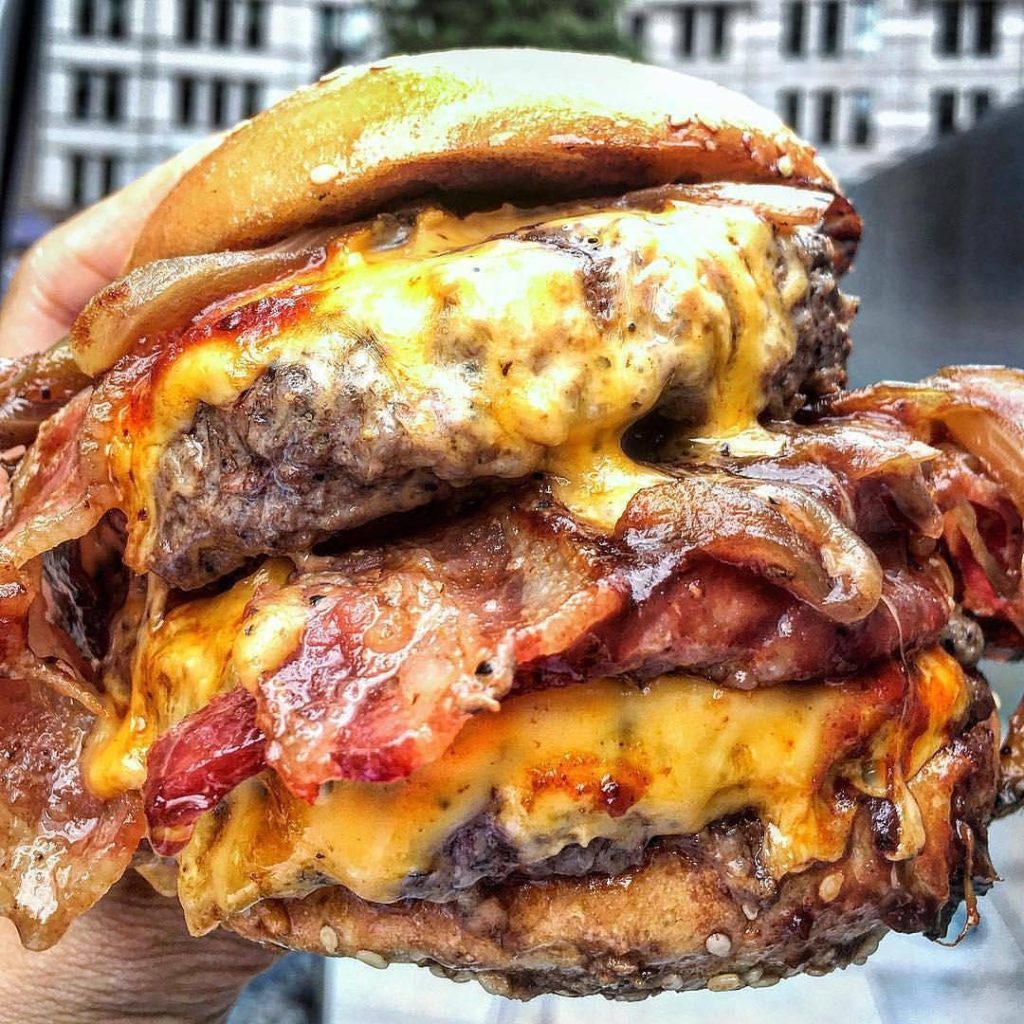
In short, we love to eat. But, it’s not just the experience of eating that appeals to humans. We love the experience of dining, in a myriad of ways. Aside from the obvious reasons: the ambiance, being served, not having to cook, or clean up the messes, eating things we would probably not take the time to make ourselves. But the most important reason of all is the camaraderie. Humans gather with people, not just because it’s useful after a kill to share the spoils, but because we are social animals and the best way to bond with fellow humans is to break bread, share the grub, eat a meal together. Granted, in this day and age, some people sit together whilst looking at their own individual phones, not talking, which I think is the single most critical factor in the ruination of humankind, and now many millennials will make the first person to look at their phone during dinner – pay for everyone else – but that’s a subject for another time. Dining together, whether it’s on a gingham blanket by the lake with a picnic basket, or around a fire with your tribe, or at a booth in a pub, or at a fancy feast – dining together is the glue that holds civilization together.
Food, and the preparation of it, and in particular the eating of it, bring the fondest memories of my childhood. I come from a Slavic Jewish background, and as a wonderful double whammy, I grew up in Brooklyn, New York, so I learned how to eat everything. Eating was an adventure, it was a bonding experience for my family. It was going to the diner with my dad, (open 24/7 in New York with several glass swiveling showcases that held pies so tall you couldn’t imagine actually wrapping your mouth around them, and giant menus that had every possible type of food imaginable). Eating meant big dinners with extended family. There was talking and laughing and arguing and … life!
Gramma Lily cooked a combination of Slavic-Jewish-American foods. My favorite times were making blintzes. The recipe was simple – pot cheese or farmer’s cheese (a cross between cottage cheese and ricotta), mixed with egg and cinnamon sometimes for the filling; thin crepe-like pancakes made when we swirled a small pouring of batter in a hot, buttered pan and banged out the product on the table where we had rows of small towels covering it. We ate the first batch and froze the rest. The blintzes were simple, fried up just a bit and served with a dollop of sour cream. YUM!
When we went to visit someone or into the city (Manhattan, New York) Gramma dressed in classy clothing, knee-length skirts or dresses, with short-heeled shoes. We rode on the subway, and Gramma always told me to keep my legs closed, because we wore dresses and I didn’t want anyone looking up my dress, or seeing reflections in my patent leather shoes – the ones that I needed a special tool to buckle.
However, my grandmother wore house dresses around the house – loose dresses just below the knee; sometimes with oxford shoes that were ugly, but comfortable – lace-up shoes with anklet socks. (In cold weather, she always wore a kerchief on her head. This was the perfect outfit for cooking and cleaning and taking the bi-weekly trip to the grocery store. I often went with her to the Key Foods, a local grocery around the corner and across the street; we rarely went to the supermarket, which was within walking distance but too far to carry anything home. She pulled a wire shopping cart behind her for the few bags of groceries.
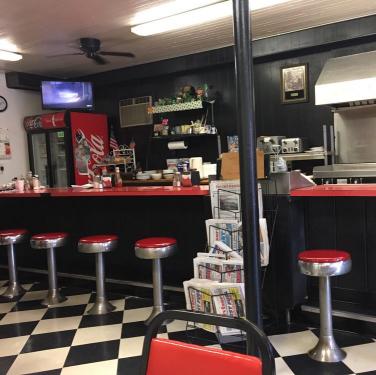
Sometimes, I got lucky and we stopped first at the luncheonette on the corner. We always sat at the counter on bar stools made of red leather and chrome. The luncheonette had rather dark lighting and I almost always ordered a hamburger – a juicy, meaty burger on a white bread bun with Heinz ketchup, a sour pickle on the side, and a Coke in a curvy glass. Sometimes, Gramma let me get an egg cream which was chocolate milk with seltzer; hard to find nowadays, except in New York.
Some people had a hard life and a hard childhood, which I’m sure makes for better stories, but luckily for me, life was easy. I had my share of angst, but for the most part, life was pretty cozy. Gramma Lily cooked dinner and Grampa Archie came home from the tire store (Royal Tires) that he owned in the Bronx, about 6 or 7 p.m. and we sat down to dinner at the Formica table with the green swirls. When I was younger, my Aunt Carol usually ate with us, and sometimes my mother made it home from her work in Manhattan as a secretary to join us. When it was just Gramma and Grampa and me, Gramma would talk endlessly about the price of grapefruits that day or some other quotidian detail and Grampa would read the newspaper as he ate, “hmm-ing” every now and then to let his wife know that he was listening (sort of). Whenever she got annoyed with him she would say “Mr. Finke, are you listening?” and he would look up to assure her that he hung on her every word.
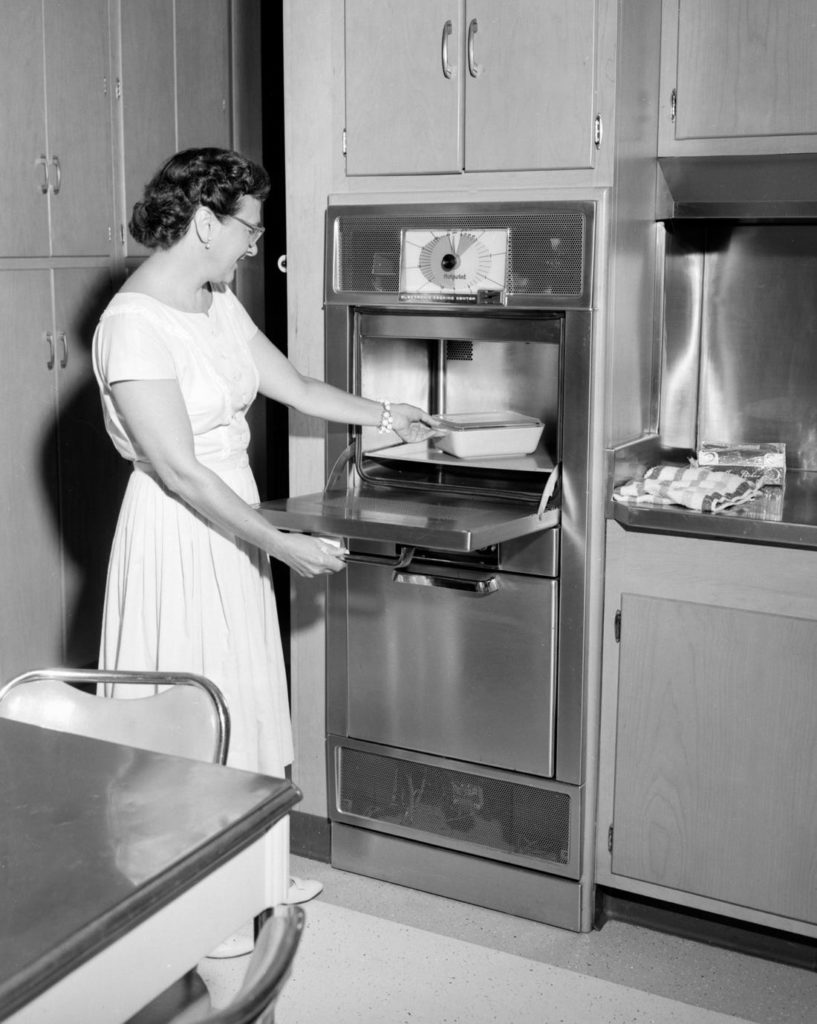
Our kitchen had a wall oven. We had to turn on the gas (a scary proposition) and light the pilot light with a match. When I was old enough, they let me get it going. I could smell the gas and it was quite exciting to think that I had to light the pilot before the gas actually blew up the kitchen. If I took too long lighting the match, we had to turn off the gas so it could dissipate and I would try again in a few minutes.
Gramma only bought her meat from the kosher butcher, of course. Not that we were kosher, but that’s where we got our meat since we were Jewish and they had the best meat. We followed a few of the Jewish rules, like never having dairy with meat, eating kosher meat, and eating only matzoh, (no bread or anything leavened with yeast) on Passover. We used whatever rules fit our lifestyle and ignored the others. She got the best meat but cooked it to death. It was only later in life I discovered that meat was much tastier and tender when it was cooked medium rare. We regularly had baby lamb chops, rib steaks, and prime rib roast for all special occasions.
Gramma also made plenty of ethnic dishes, which I helped cook, or at least, hung around for lots of tastes. There was fleisha-g-borscht – a hot beet soup cooked for hours with flanken meat floating in it. On Jewish holidays, she made potato latkes, eaten with apple sauce – Yum, yum, yum. (My dad and his family ate the latkes with sour cream; they were from a different sect of Judaism, apparently.) She made a delicious chicken which she squeezed several oranges over, with cut onions, and generously sprinkled with paprika, a Hungarian spice.
The holidays were all about eating. The food was all symbolic. On Passover, we spent a couple of hours telling stories about things that happened (supposedly) a few thousand years ago. Then, we lifted each food as a symbol of the event, before we ate it. The egg represents new life. The charoset, a delicious combination of apples, sweet wine, and cinnamon, represents the mortar that the slaves used to build the pyramids. The parsley, a bitter herb, represents the bitterness we endured. The salt water in which the eggs float, represent our tears.
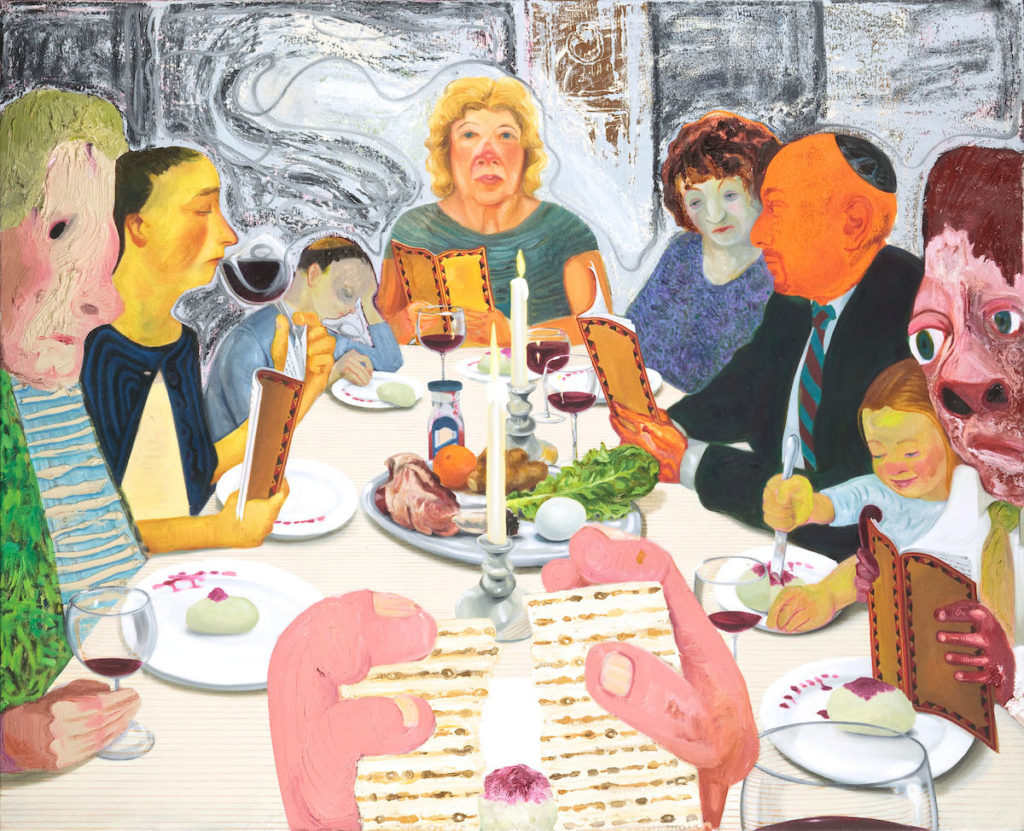
At the Passover Seder, everyone took turns reading. We usually celebrated at my cousin Rozy’s house. One time, when it was her turn to read, she was reclined in her chair, snoring away. Yea, it was a long Seder.
A strange thing I ate often as a child, but which I’m sure most of you would not have heard of unless you’re from that neck of the woods, was chicken fat spread on a piece of fresh bakery rye, with a touch of salt and a sour pickle on the side. Most delicious. We got our pickles at a pickle factory around the corner from my house. I got to reach into the barrel and select my pickle – a gigantic garlic pickle for only a nickel. To this day, I rarely buy anything other than Bubbie’s pickles, which are now quite expensive, but worth every penny.
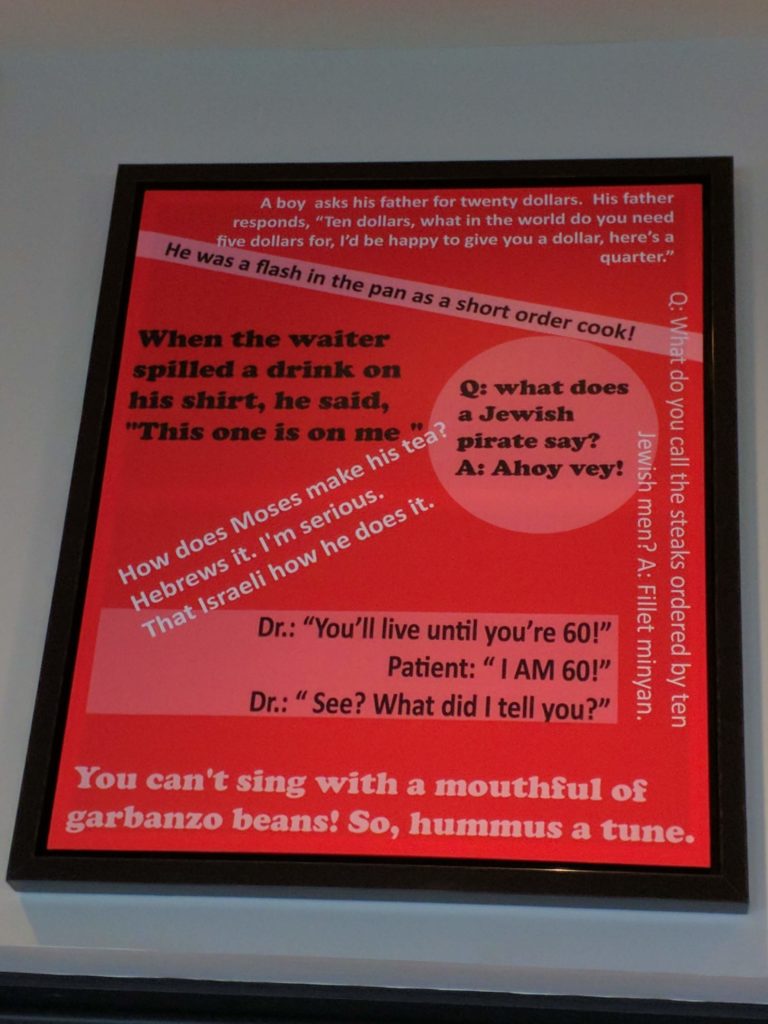
Even though we lived near the ocean, we did not eat lots of fish. Gramma only occasionally cooked fish: mackerel – an oily fish which she cooked with onions and paprika, but soaked in milk, or flounder, breaded and fried. I discovered salmon, my favorite fish and chock full of omega oils, later in life, but she did make salmon croquets – using salmon from the can mixed with bread crumbs, egg, and grated onion, and served with a Russian dressing she made herself from Heinz Ketchup and Hellman’s mayonnaise (Best Foods out west).
We did, however, eat seafood (verboten for religious Jews, so I’m glad we didn’t follow that rule). About once a month, we went to a restaurant across from the sea, called Lundy’s. It was a huge, open mess hall, illuminated dimly from medieval-looking chandeliers. All the tables had white table cloths, and all the waiters were black. They held white napkins on their arms. You might have thought you were in the south, except for the fact that they were not slaves. I always ordered a full lobster. My grandma would eat the weird stuff in the middle (green roe) and I ate every other morsel. I loved dipping my skinny fork into the claws to pull out the meat and dip it in melted butter. I started the meal with clam chowder and shrimp cocktail, and occasionally oysters in the R months. Once, I bit down on something hard – a black pearl – a rough around the edges, genuine pearl. As I mentioned, I had a pretty fabulous childhood.
At home, one day a week we had a dairy dinner – bananas and sour cream, fresh bakery rye bread, and perhaps egg noodles with cottage cheese, cinnamon, butter, and a touch of sugar – something I still crave every now and then. I grew up in the 1960’s, an extension of the 1950’s when there was incredible prosperity in America and all sorts of new inventions for the happy housewife including Wonder Bread (soft, white bread with no fiber and virtually no nutritional value), canned vegetables (I tried sneaking my peas into the garbage but my grandmother would always hear me from the living room and scream “Robin, sit down and eat those peas!” whereupon I would gulp them down with Coca-Cola.) As it turned out, although everyone thought these wonderful new foods were convenient and tasty, many of them turned out to have very little nutritional value and consequently, pardon the imagery, but I spent half my childhood constipated, sitting on the toilet drinking prune juice. To this day, I cannot drink prune juice and I have since learned to eat raw foods that provide enzymes and nutrients that have not been destroyed, and eat breads and other foods that are loaded with fiber and vitamins. Ah, the ignorance of the times.

The only time my grandpa prepared food was on Saturday or Sunday morning. Most men were not really required to cook in those days, because they went to work and the women stayed home (although my dad did cook, but he lived alone for a long time, and of course, every Italian man in Brooklyn knows how to make sauce). Grandpa made small hors d’oeuvres from appetizing, which is what we called smoked fish like herring, lox, whitefish, sable, or sturgeon. He meticulously spread cream cheese on bits of New York bagels or bread, with raw onions atop the fish. Most delightful. And even though I was a child, coffee was imperative, to dispel the intensity of the fish, of course. The only thing Grandpa actually cooked were omelets, which were simply eggs, but he was able to flip the eggs in the pan by tossing them in the air with a flick of his wrist and I was always impressed.
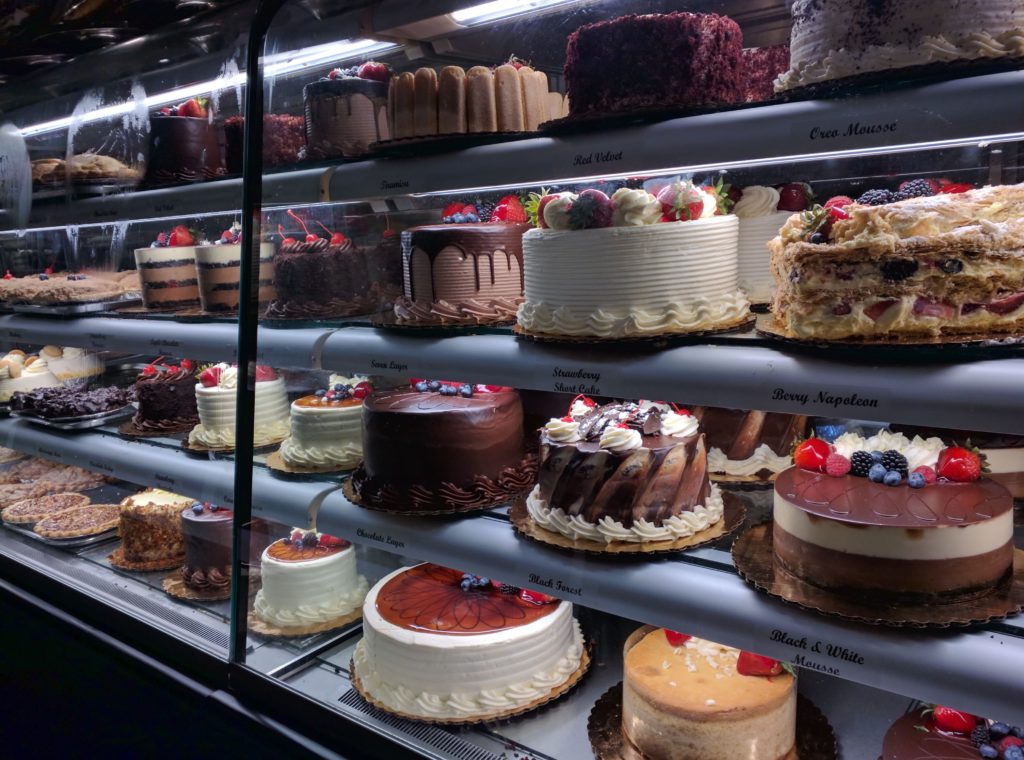
Oh, the foods we ate in Brooklyn in the 1960’s. I could go on and on, putting on pounds just thinking of it all. For those of you who would like to reminisce with me: Mallomars (dark chocolate covering a marshmallow center – can still be found in NY or Florida), honey cake, Thomas’ date nut bread with cream cheese, ziti, Brooklyn pizza dripping with oil, Italian ices that the vendor scoops into a paper cup, lasagna…hmm. You might notice that I haven’t mentioned any vegetables or fruits. Well, I did eat fruit. Macintosh apples, blueberries, grapefruit, cantaloupe melon. Anway, I sure had fun eating. Until…
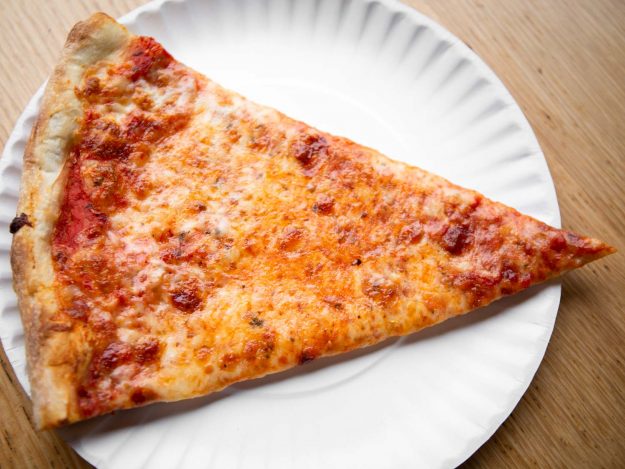
Well, I’ve already mentioned the childhood constipation. I love to eat, and if I didn’t know any better, I’d just eat pizza every day. And chocolate. Or really good Italian bakery cookies. But, when I was 18, my gramma got cancer, and I began a lifelong exploration of nutrition. I didn’t always follow my new found knowledge, but I’d always come back around to eating right. I learned about fiber, and all sorts of healthy things. Now, I follow my grandpa’s advice: everything in moderation. Now, I eat mostly organic and GMO free. Now, I eat lower on the food chain, and consume lots of fresh fruits and vegetables. Etc. Etc. Etc. BUT…
I also still revere eating with people around the table. Conversation. The exchange of ideas. the sharing of food. I love to cook, and enjoy cooking with other people. I don’t eat things that don’t taste good, but I figured out that I can eat yummy things and still be healthy. I still think of food as a social endeavor. I know you might think it’s ironic, since I live alone and eat alone oftentimes, but I take my time to prepare good meals, I consider grocery shopping a meditation, and I dine with friends and family whenever possible. My advice – put down those phones and talk to each other. And do it with food.
